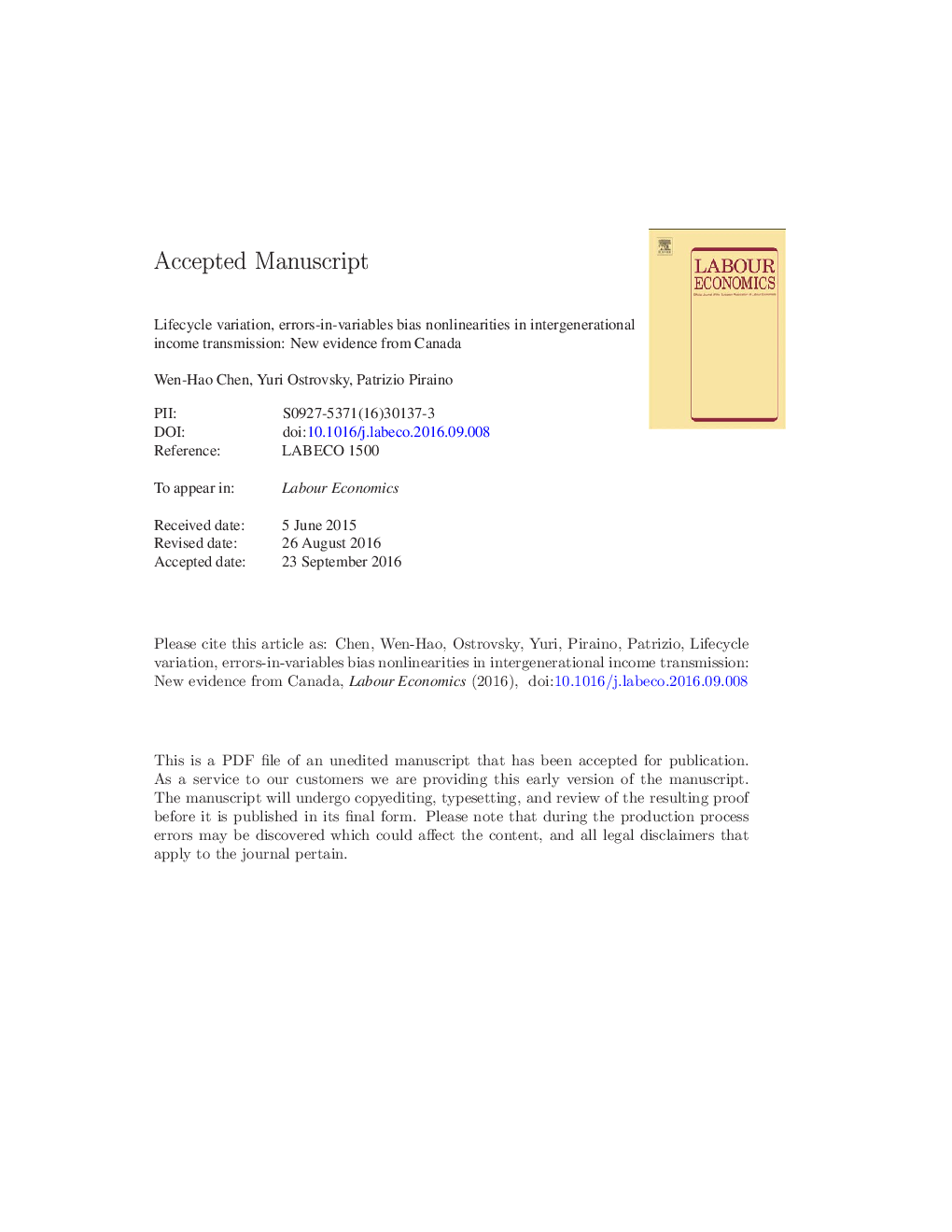| Article ID | Journal | Published Year | Pages | File Type |
|---|---|---|---|---|
| 5102021 | Labour Economics | 2017 | 31 Pages |
Abstract
This paper uses Canadian administrative data to test the impact of lifecycle earnings variation and errors-in-variables bias on estimates of intergenerational earnings and income mobility. We find lower levels of mobility compared to previous studies, with a new estimate of the father-son intergenerational earnings elasticity of 0.32. Our analysis also shows that the father-daughter elasticity is much less sensitive to these biases. We investigate whether improved measures of father/child permanent earnings may have a distinct impact on the estimated intergenerational persistence at different parts of the distribution. Taking advantage of exceptionally high sample sizes, we find that the impact of lifecycle bias is more pronounced at the top of the income distribution. We also document that much of the average intergenerational income persistence in Canada can be accounted for by limited mobility at the top, while mobility is significantly higher among children born to low-income fathers. These nonlinear patterns resemble those found in Northern Europe and are different from those observed in the United States.
Related Topics
Social Sciences and Humanities
Economics, Econometrics and Finance
Economics and Econometrics
Authors
Wen-Hao Chen, Yuri Ostrovsky, Patrizio Piraino,
